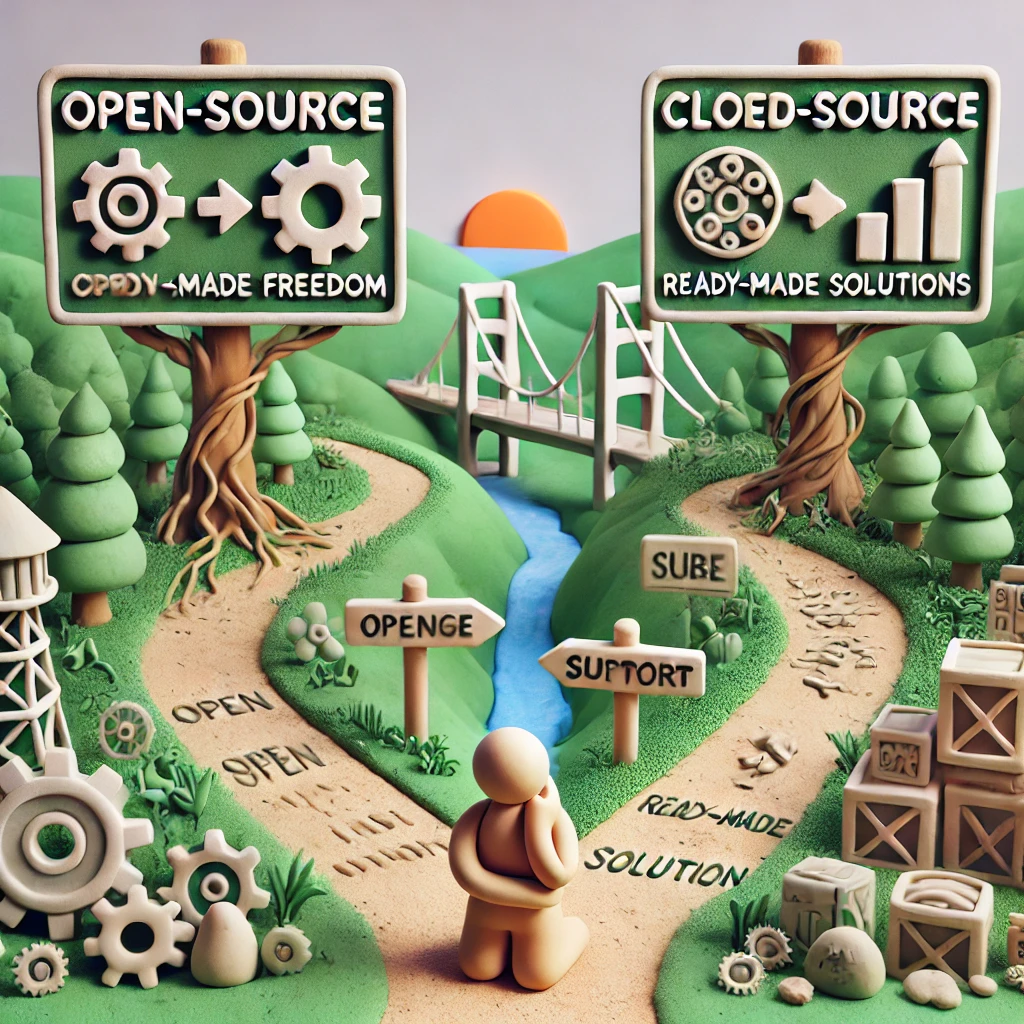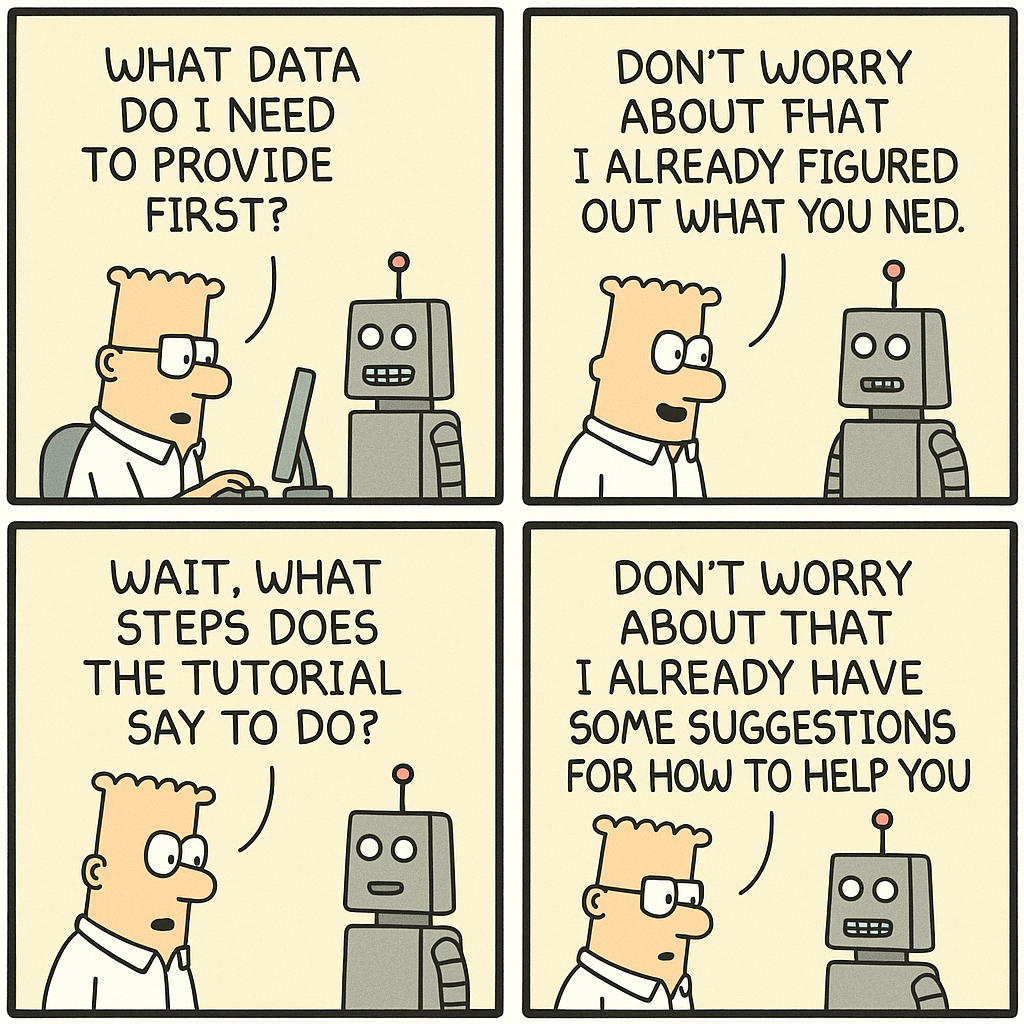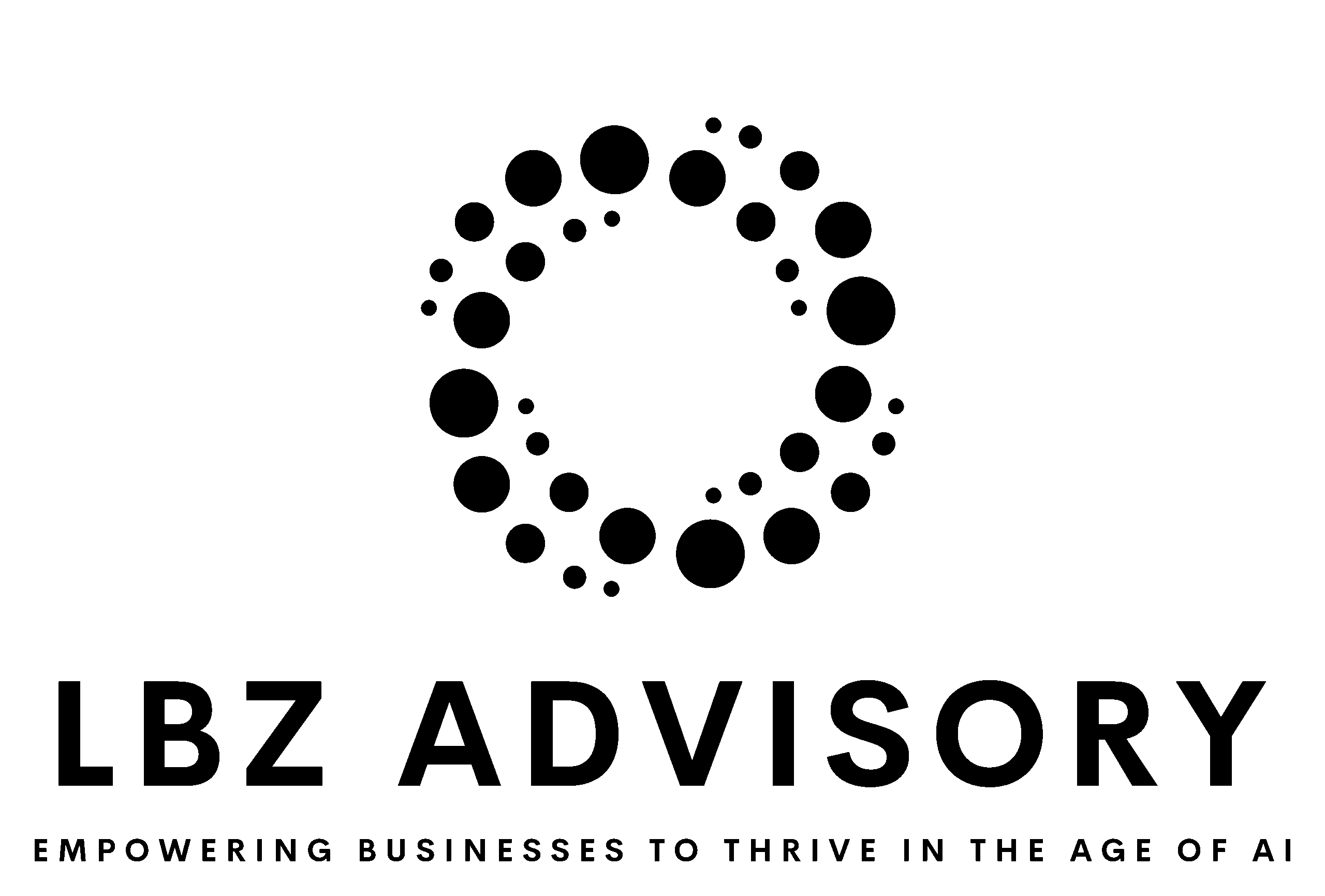Making the Right Choice for Your Business
Across all the different companies and industry sectors I advise, one critical decision stands out for business leaders: should you build AI capabilities using open-source models, or lease pre-built, closed-source models? This choice can significantly impact your product’s cost, functionality, and control. Making the right decision can accelerate your growth, optimize costs, and give you a competitive edge in the market.
The Strategic Importance of AI Model Decisions
Choosing between building and leasing AI models is more than a technical decision—it’s a strategic one that can define your company’s future. The right choice can lead to faster innovation, better user experiences, and a stronger competitive position. Conversely, the wrong choice can result in higher costs, slower time-to-market, and potential security risks.
Here’s a simple framework to help you decide.
Evaluating Your Business Needs
Before deciding whether to build or lease AI models, it’s essential to evaluate your business needs. Consider the following questions:
- What is the primary purpose of integrating AI into your product?
- How critical is AI to your revenue model?
- Do you have the in-house expertise to develop and maintain AI models?
- What are your long-term scalability requirements?
- How important is data privacy and control to your operations?
Answering these questions will help you understand whether building or leasing is more aligned with your strategic goals.
Key Considerations for Your AI Strategy
Cost
Closed-source models involve licensing fees or pay-per-use costs. These costs can add up quickly, especially as your user base grows. Open-source models are typically free to use, but they require significant investment in terms of training and customization. Weighing the upfront and ongoing costs is crucial to making a financially sound decision.
Control
Open-source models give you full control over the code, allowing modifications to suit your specific needs. This means you can optimize the AI’s performance for your unique use case. In contrast, closed-source models offer less flexibility but often come with extensive support and documentation, which can be invaluable if your team lacks deep AI expertise.
Data Privacy
Open-source models let you keep your data in-house, which is essential for applications involving sensitive information. This control can help ensure compliance with data privacy regulations. Closed-source models may require sharing data with the provider, which could raise privacy concerns and necessitate additional security measures.
AI In-House Capability
Having a strong in-house AI team is crucial if you decide to build. Your team needs the expertise to develop, maintain, and continually improve the AI models. Without this capability, the challenges of building and maintaining custom AI solutions can outweigh the benefits. This includes understanding the intricacies of the models, troubleshooting issues, and implementing updates.
Support and Ecosystem
Closed-source models often come with extensive support and a robust ecosystem, including regular updates, community support, and comprehensive documentation. This can significantly reduce the time and effort required to integrate and maintain AI capabilities in your product, providing a safety net for your development team.
Ability to Scale
As your business scales, the costs and benefits of each approach become more pronounced.
Scaling with Closed-Source Models:
- Cost at Scale: Ongoing licensing fees can escalate with increased usage, potentially impacting profitability. These costs need to be factored into your long-term financial planning.
- Performance: Closed-source models may offer better performance out-of-the-box, helping to handle large-scale operations efficiently. This can be critical for maintaining a smooth user experience as your user base grows.
- Support: The robust support from providers can be crucial as your user base grows and demands more reliability and uptime. This can include access to technical support, updates, and additional resources that can help you manage growth effectively.
Scaling with Open-Source Models:
- Cost Savings: Avoiding licensing fees can lead to significant cost savings as your user base grows. This makes open-source models more financially attractive in the long run.
- Flexibility: Full control over the model allows for more tailored optimizations and improvements. This means you can continuously tweak and improve the AI to better meet your growing needs.
- Resource Requirements: High initial investments in expertise and infrastructure are needed to scale effectively. This includes not only the technical infrastructure but also the human resources needed to develop and maintain the models.
When Leasing Closed-Source Models is Your Winning Strategy
Monetization Tied to AI Features
Leasing closed-source models can be a strategic move, especially when your product’s revenue is tightly linked to AI capabilities.
If your product’s revenue relies heavily on AI capabilities, leasing a closed-source model can be strategic. These models, like OpenAI’s GPT-4, are often more refined and powerful. This allows you to focus on building a user-friendly interface and marketing your product.
Here are some companies that have benefited from this approach:
- Copy.ai: Copy.ai leverages OpenAI’s GPT-4 to provide high-quality content generation. This strategic choice allowed them to focus on building an intuitive user interface and robust marketing strategy, rapidly growing their user base and establishing themselves as a leader in the AI content generation market.
- Grammarly: While Grammarly has proprietary AI models, it integrates OpenAI’s GPT-3 for grammar suggestions. This makes their writing assistant more sophisticated, offering users comprehensive and accurate writing help.
- Jasper AI: Jasper AI uses OpenAI’s GPT-4 to provide advanced content generation tools. By leveraging a closed-source model, Jasper AI could quickly develop a competitive product and focus on marketing and customer acquisition.
- PathAI: PathAI leverages closed-source AI models to enhance pathology diagnostics, improving accuracy and efficiency in detecting diseases from medical images. By partnering with Google Cloud, PathAI uses advanced AI models for scalable, efficient pathology diagnostics, enhancing accuracy without heavy investment in AI development.
- Babylon Health: Babylon Health uses closed-source AI models to power their telehealth platform and diagnostic tools. Collaborating with Google Cloud AI and IBM Watson, Babylon Health powers its telehealth platform, providing advanced health assessments and personalized recommendations.
- Domino’s Pizza: Domino’s uses closed-source AI models from IBM Watson for customer service chatbots and order processing. This allows Domino’s to provide efficient and accurate service without developing complex AI systems in-house.
- Blue Apron: Blue Apron leverages closed-source AI models from Google Cloud to optimize supply chain operations and personalize meal recommendations. This helps them enhance customer satisfaction and operational efficiency by implementing sophisticated AI capabilities quickly.
- Kustomer: Kustomer integrates closed-source AI models to enhance customer support with advanced chatbots and automation. This decision allowed them to provide high-quality, reliable service without the complexities of building their own AI models.
- Macy’s: Macy’s employs closed-source AI models from IBM Watson for customer service, inventory management, and personalized marketing. This allows Macy’s to quickly implement advanced AI capabilities, enhancing customer experience and operational efficiency.
Impact on Business Models, Revenue, and Growth:
- Faster Time-to-Market: Leasing allows you to quickly deploy advanced AI capabilities, speeding up product launches and iterations.
- Focus on Core Competencies: You can invest more resources in customer acquisition, user experience, and marketing.
- Revenue Growth: By leveraging sophisticated AI models, your product can attract more users and generate higher revenue.
When Building Open-Source Models is the Smarter Choice
Building with open-source models can be a cost-effective strategy when AI is a value-add rather than a core revenue driver.
High Consumption, Indirect Monetization
If AI is a value-add rather than a core revenue driver, and you have a large user base, building with open-source models can be cost-effective. You avoid ongoing licensing fees and can tailor the model to your specific use case.
Here are some companies that have excelled with this approach:
- Pinterest: Pinterest leverages open-source AI models for various applications like image recognition and search. This approach allows them to customize the models to fit their unique needs, enhancing user experience and engagement without the high costs of closed-source solutions.
- Airbnb: Airbnb uses open-source models for machine learning tasks such as dynamic pricing and search ranking. By building on these models, Airbnb can optimize its algorithms to improve user satisfaction and increase bookings.
- Reddit: Reddit employs open-source AI models for content moderation and recommendation systems. This choice enables them to customize the AI to handle the platform’s specific needs, ensuring a safer and more engaging user experience.
- Mayo Clinic: Developing open-source AI models for medical research and diagnostics, using TensorFlow and PyTorch to tailor solutions to clinical workflows.
- Stanford Medicine: Stanford Medicine employs open-source AI models for various research initiatives, such as disease prediction and medical imaging. By using frameworks like scikit-learn and TensorFlow, they customize their AI tools to meet specific research needs and improve patient outcomes.
- Mozilla: Mozilla, the company behind Firefox, uses open-source AI models to enhance privacy and security features. This aligns with their mission of promoting open-source solutions and user-centric privacy.
- Walmart: Walmart uses open-source AI models to optimize their supply chain, inventory management, and pricing strategies. By developing these models in-house, Walmart can tailor the AI solutions to their operational needs, achieving greater efficiency and cost savings.
- Zomato: Zomato uses open-source AI models to develop their recommendation engine and optimize delivery routes. This customization helps Zomato tailor the AI to their specific business needs, improving user experience and operational efficiency.
Impact on Business Models, Revenue, and Growth:
- Cost Savings: Building with open-source models can reduce long-term expenses by eliminating licensing fees.
- Customization: You have full control to tweak the AI to fit your specific needs, potentially leading to a unique competitive advantage.
- Scalability: As your user base grows, you can scale your AI capabilities without escalating costs.
Why This Decision Impacts Your Business:
Cost Structure: The choice between building and leasing AI models directly affects your cost structure. Licensing fees for closed-source models can be substantial and recurring, potentially impacting your profit margins and budget allocations. On the other hand, while open-source models can reduce long-term expenses by eliminating these fees, they require significant upfront investment in terms of training and customization.
Product Differentiation: Your decision can determine how unique and tailored your product is, significantly affecting your market positioning. Closed-source models might offer superior performance out-of-the-box, but open-source models provide the flexibility to fine-tune and customize the AI to better fit your specific needs, giving you a potential competitive advantage.
User Trust: Data privacy and control are critical for building and maintaining user trust, especially in sectors dealing with sensitive information. Open-source models allow you to keep data in-house, ensuring better compliance with data privacy regulations. In contrast, using closed-source models might require sharing data with the provider, raising potential privacy concerns.
Innovation and Agility: Building AI models in-house using open-source platforms can foster innovation and agility. Your team can rapidly iterate and improve the models based on direct feedback and evolving requirements. Leasing closed-source models, while quicker to implement, may limit your ability to innovate due to dependency on the vendor’s development cycle and feature set.
Scalability: As your business grows, scalability becomes a crucial factor. Closed-source models might offer robust support and performance out-of-the-box, which can handle large-scale operations efficiently. However, the costs can escalate with increased usage. Open-source models, while requiring more initial setup, offer greater flexibility and cost savings as you scale, allowing for tailored optimizations and continuous improvements.
Strategic Alignment: Your choice should align with your long-term strategic goals. If AI is core to your product’s differentiation and market strategy, investing in building open-source models might be more beneficial. Conversely, if AI is a supportive feature rather than a core component, leasing closed-source models might provide the necessary functionality with less complexity.
Ultimately, the choice between building and leasing hinges on your specific needs and resources. By carefully evaluating the pros and cons, you can make an informed decision that empowers your product and drives success in the AI-powered world. Assess your business model, growth aspirations, and core competencies to determine the best path forward. With the right approach, you can optimize costs, enhance functionality, and gain a competitive edge.
















